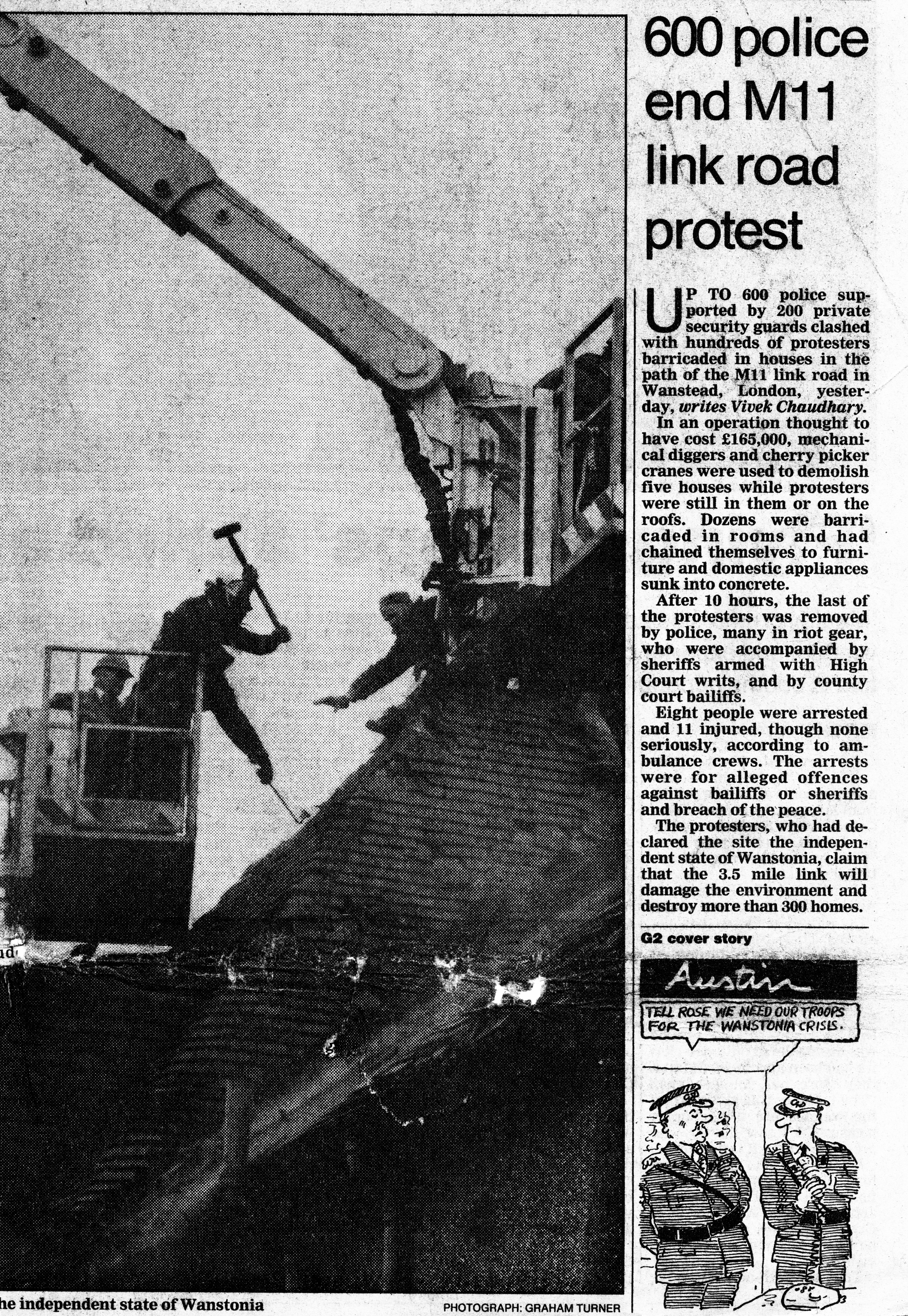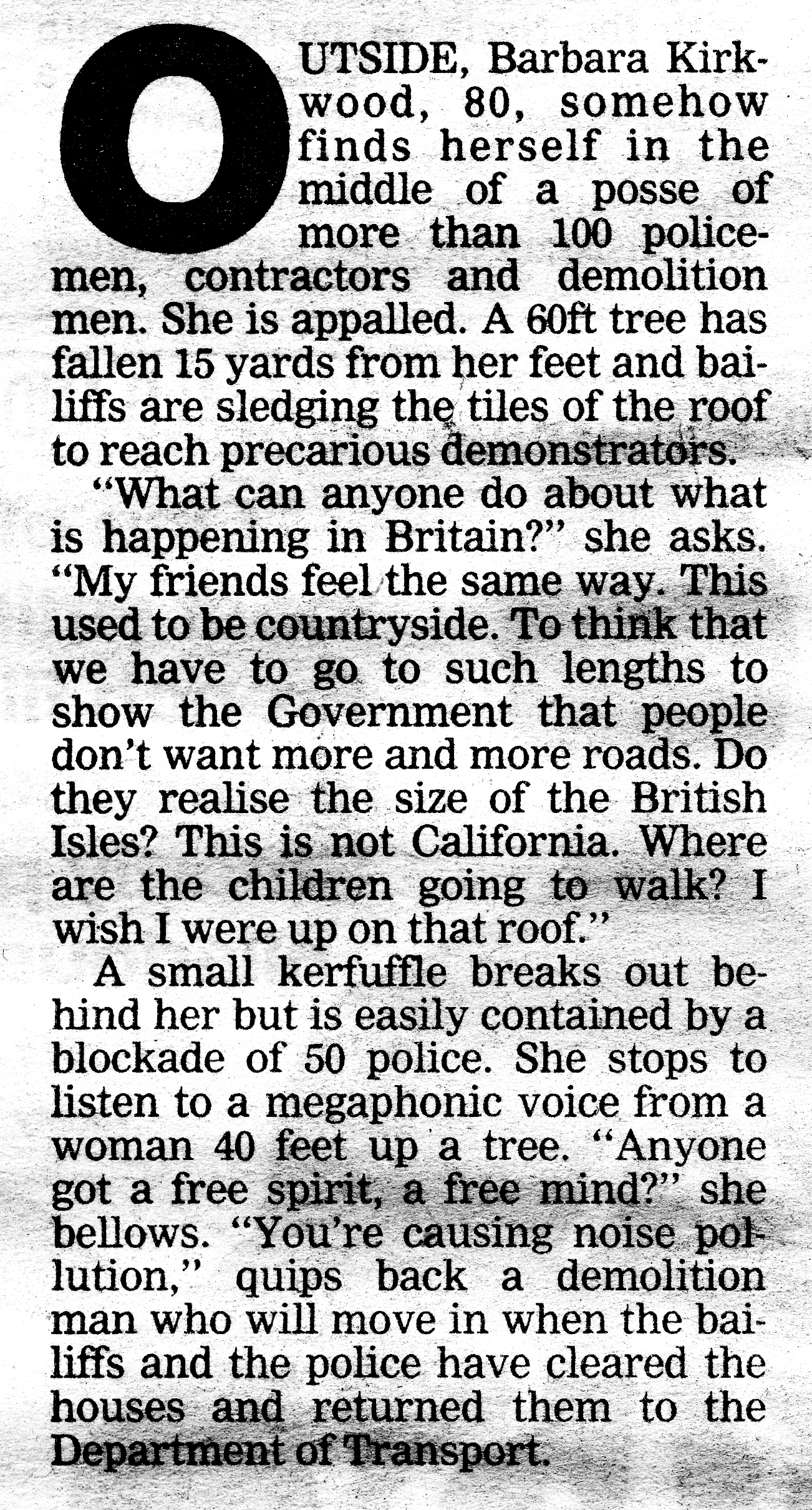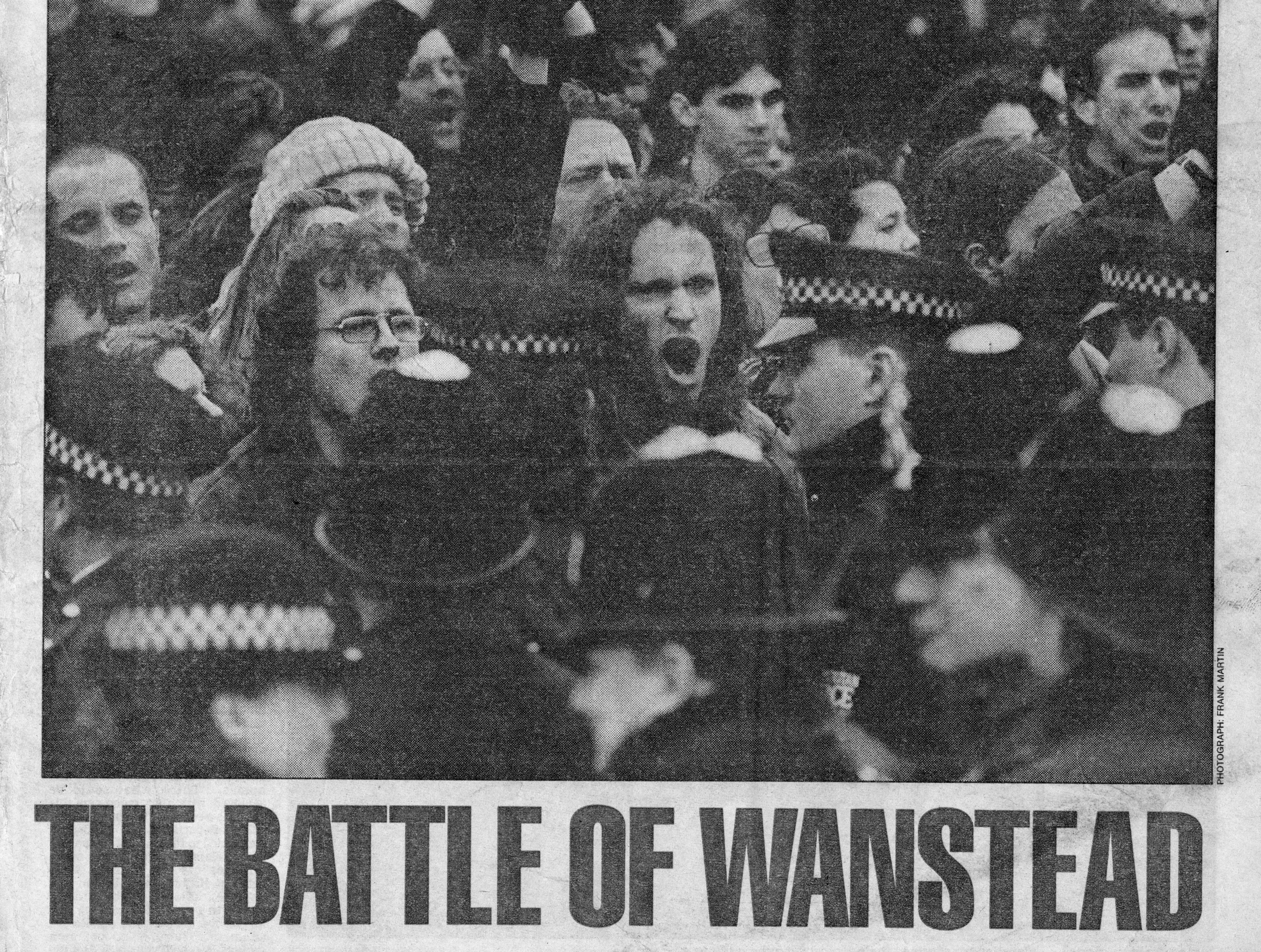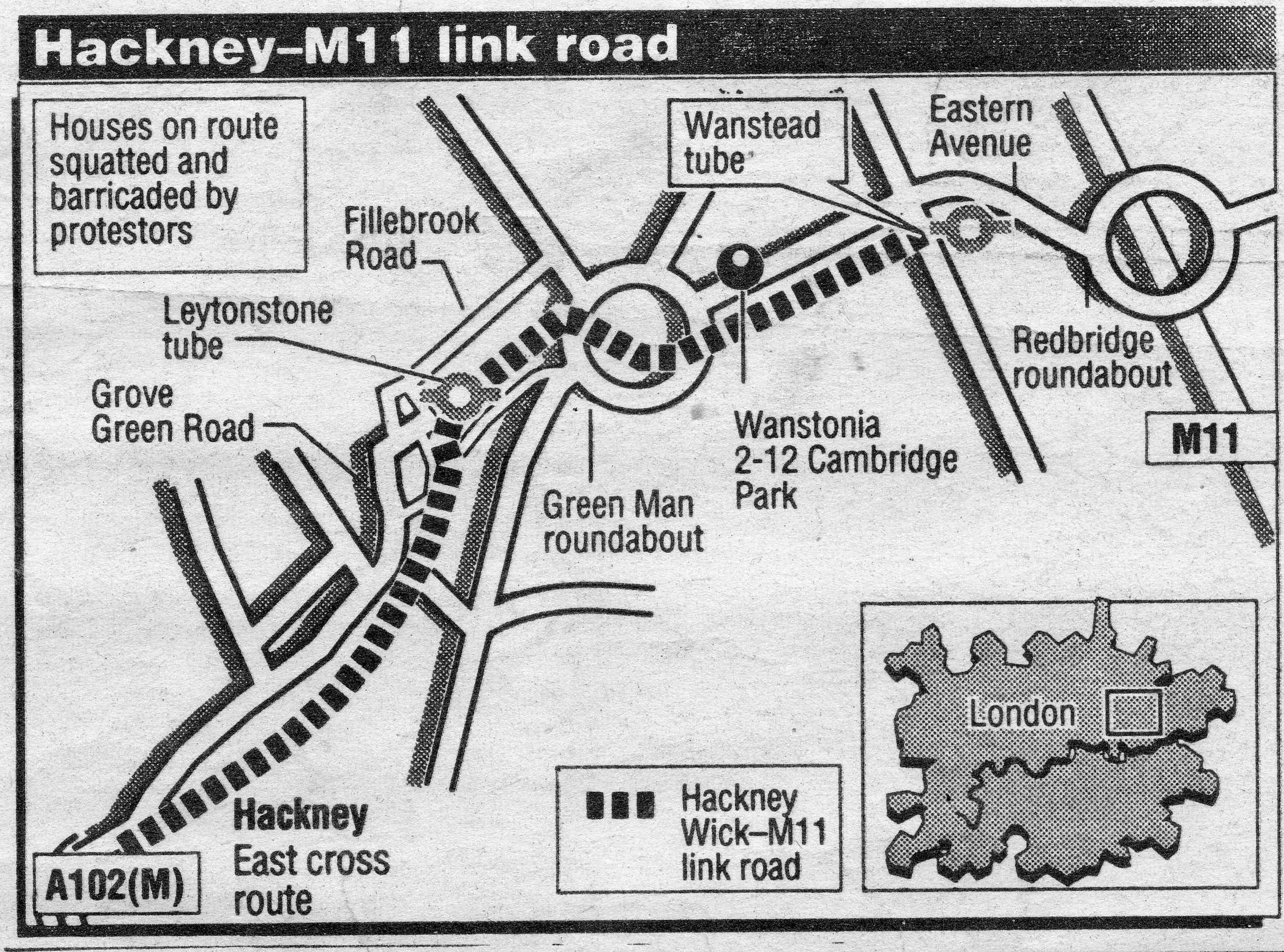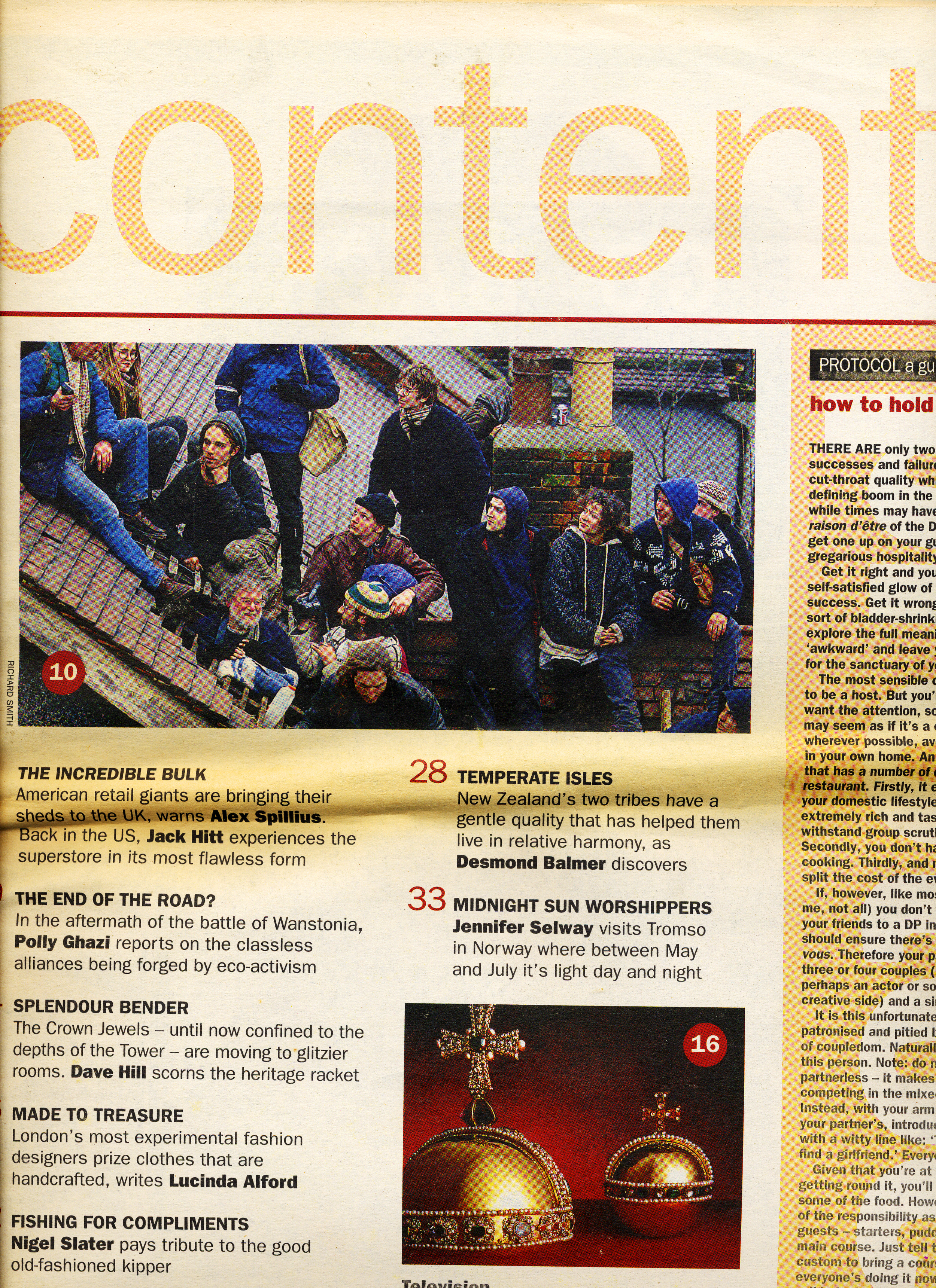Running concurrently with the campaign of opposition against the CJA, there was also a countrywide resistance to the program of road building brought in by the last Conservative regime.
The No M11 link road protest kicked off when the government started to demolish property in the path of the link road across the communities of Leyton, Leytonstone and Wanstead in East London, in order to make way for the road building. The area was rich in squats, artists and creative activity.
Environmental protest during this time was a fusion of art, rave culture, civil disobedience, direct action, occupation and green thinking. There were protests against road construction across the country, each one feeding off the skills learnt and invented at each site. Sunnyside organised benefit raves to fund the protests in which we were involved.
Establishment media coverage of the events was simplistic, nearly always referring in a standard formula to “a small minority of anarchists and protesters.” One illustrative instance of this occurred at this time when we were invited by BBC researchers to take part in a televised debate on the protest.
They questioned us as to whether we were eco-protesters, anarchists, new age travellers or ravers. When the reply came back that we perhaps all of those social categories or perhaps none, they grew upset, and remarked that we couldn’t be all or none of them, we had to identify a category into which they could fit us for broadcasting purposes, or not take part. Needless to say we didn’t take part.
It also seemed like in observed interview situations, no matter how intelligent and eloquent the chosen participants were at the time; during the editing process anything intelligent or relevant would be ignored in favour of the most stereotypical and dumb sounding interviewees, who always were selected for public broadcast.
Wanstonia was the second major eviction of the year long campaign of opposition. The culmination of the protest was the longest running civil eviction in English legal history, at Claremont Road. Protesters, local people, artists and all kinds of individuals who found in the campaign a focus for their resentment at the policies of the government of the day occupied the entire street to defend its eviction.
The cold morning of February 16th 1994 saw an army of roughly 1000 police, TSG and bailiffs move in to evict three houses in Cambridge Park. Each house was full of people opposed to the scheme from floor to roof. Each room was filled with people, the doors nailed and screwed shut with handles removed.
The stairs were also removed to prevent access to the upper storeys. The attic spaces were also filled with people, as were the rooftops. After a freezing night on the tiles we waited as the operation to remove us began. These pictures document that process. I'll never forget the shudder of the building underneath us as the diggers started to demolish the property we were on top of while we were still on its roof.

